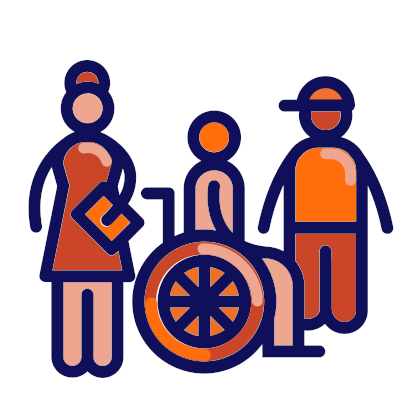Making children’s and students’ voices heard

Schools have a key role in upholding this principle. At the same time, students need to be aware of both their rights and responsibilities.
Learning about human rights and democracy is a fundamental first step for becoming an informed and responsible citizen.
Students also need to participate in activities such as debating and community work. Skills, knowledge and critical understanding must be coupled with the attitudes and values that form part of a democratic culture. All this should be promoted through a whole-school approach.
Facts & figures
While students make up approximately 92% of any given school’s population, the decisions in school are routinely made by the remaining 8% who are adults.[1]
Students learn better when they are engaged partners throughout the educational process.[2]
What is student voice?
Student voice is the right of students to have a say in matters that affect them in their schools, and to have their views and opinions taken seriously. It encompasses all aspects of school life and decision-making where young learners are able to make a meaningful contribution, adapted to their age and stage of development. It stretches from informal situations in which students express an opinion to their peers or staff members to participation in democratic structures or mechanisms, such as student parliaments and consultations.
Student voice can vary from simple self-expression to taking on a leadership role in an aspect of school life. It can be characterised according to a 6-fold typology of increasing complexity and responsibility:
- Expression – voice an opinion
- Consultation – asked for an opinion
- Participation – attend and preferably play an active role in a meeting
- Partnership – have a formal role in decision-making
- Activism – identify a problem, propose a solution, and advocate its adoption
- Leadership – plan and make decisions
Given that the relevant activities are age-appropriate, student voice can be expressed anywhere in the school community, in and out of lessons, e.g., through inviting students to comment on teaching approaches and techniques, suggest topics for class discussion, participate in school policy committees and/or consultations, or just join in a casual conversation on school matters with a teacher or other staff member in their free time.
Why is student voice important at school?
Student voice is rooted in the concept of children’s rights and human rights. In particular, Article 12 of the United Nations Convention on the Rights of the Child (UNCRC) establishes the right of every child to have a say in matters which affect them, whether in or out of school, as well as to be involved in decisions that affect them. More generally, the UNCRC includes other articles that seek to increase students’ voice, including the right to seek and receive information, to express their own views and to associate with others.
UN Convention on the Rights of the Child: Article 12
“Parties shall assure to the child who is capable of forming his or her own views the right to express those views freely in all matters affecting the child, the views of the child being given due weight in accordance with the age and maturity of the child.”[3]
Student voice can have many benefits both for schools and the wider society – for example:
- Participation in school decision-making fosters a sense of citizenship in young learners, helping them to develop important competences, e.g. co-operation and communication skills, self-efficacy, responsibility, civic-mindedness and respect for the value of democracy – all of which lie at the heart of the Council of Europe Reference Framework of Competences for Democratic Culture (RFCDC).
- Contributing to their school community gives young learners a sense of belonging, develops self-esteem and can lead to more respectful relationships. This has a positive influence on school discipline and helps to reduce the incidence of problems such as drop-out, bullying, substance abuse and radicalisation.
- Engaging students in active learning activities in class has a positive effect not only on the classroom atmosphere, but also on the educational achievements of students and their peers.
What are the challenges?
There are a number of major areas of challenge facing the development of student voice in schools.
The first relates to the attitudes of other school stakeholders. Parents, teachers school leaders and others who have traditional views of schooling sometimes feel that children and young people should be ‘seen and not heard’ in school. They think respect for others and for authority are best developed in a culture of deference. To counteract attitudes of this kind school leaders need to introduce elements of student voice gradually, explaining the process clearly to school stakeholders and sharing the successes with them when they take place.
Some stakeholders may see empowering young learners through student voice as undermining their own power or position of authority in the school. Teachers may sometimes feel that students have more rights than they have. This merely underlines the importance of developing a whole-school culture in which all stakeholders feel safe to express their opinions freely and openly, and to have their opinions taken seriously. Student voice goes hand in hand, therefore, with the creation of a general culture of democracy and human rights in school.
The second major area of challenge is ensuring that student participation is genuine participation and not tokenism or ‘window-dressing’. This means giving students opportunities to make a real difference to their lives and the lives of other school stakeholders, and helping staff to be more open to sharing their decision-making with young learners.
The Ladder of Children’s Participation
Roger Hart, in the book Children's Participation: The Theory And Practice Of Involving Young Citizens In Community Development And Environmental Care, developed the concept of a ‘ladder of participation’ which can be applied to student voice. He suggested eight different levels or degrees of student voice, from the simplest - which is little more than the manipulation of students for the school’s benefit - to activities where decision-making is genuinely shared between adults and young learners.
A third area of challenge is the difficulty of making opportunities for student voice equally open to all students. The problem arises to some extent on account of the perception that student voice applies only to formal school structures, like pupil parliaments. For stakeholders with more traditional attitudes towards teaching and learning it can be difficult to see student voice as integral to, rather than separate from the learning process in classrooms. Another aspect of this problem is that it is the more confident and out-going students who are prepared to voice their opinions openly or stand in class or school council elections. How to integrate student voice into learning and to involve a wider range of students in the process is a whole-school responsibility and needs to be taken seriously as an area of whole-school planning and as an important topic for teacher professional development.
How can schools get active?
There are a number of ways in which schools can develop more opportunities for student voice. These include:
- Encouraging teaching staff to consider how they can involve students in the learning process in the classroom, e.g., by creating more opportunities for students to express their own opinions, debate issues, make suggestions or draw up classroom rules;
- Creating mechanisms for student consultation on issues affecting school life, e.g., through questionnaires, suggestion boxes, surveys or focus groups;
- Establishing formal bodies or procedures, e.g., pupil parliaments, student committees and commissions, or ‘circle time’;
- Inviting students to sit on school policy-development committees, e.g., on gender equality, pupil safety or health and well-being;
- Teaching young learners the skills of public speaking and debate, e.g., discussion skills, active listening or argumentation;
- Providing opportunities for peer-led activities, e.g., peer education, peer assessment or peer counselling.
[1] https://soundout.org/why-student-voice-a-research-summary/
[2] https://soundout.org/why-student-voice-a-research-summary/ ; Beaudoin, N. (2005). Elevating student voice: How to enhance participation, citizenship, and leadership. Larchmont, NY: Eye on Education
[3] UN General Assembly, Convention on the Rights of the Child, 20 November 1989, United Nations
 Resources on Making children’s and students’ voices heard
Resources on Making children’s and students’ voices heard
Multimedia
Official texts
Policy documents
Studies
Higher education for democratic innovation (Council of Europe Higher Education Series No. 21) (2016)
Tools
 Related schools projects
Related schools projects
Bosnia and Herzegovina
Bulgaria
Croatia
Cyprus
Finland
France
Georgia
Germany
Greece
Ireland
Italy
Lithuania
Montenegro
Netherlands
Norway
Portugal
Republic of Moldova
Romania
Serbia
Slovenia
Spain
Turkey
Ukraine
United Kingdom







